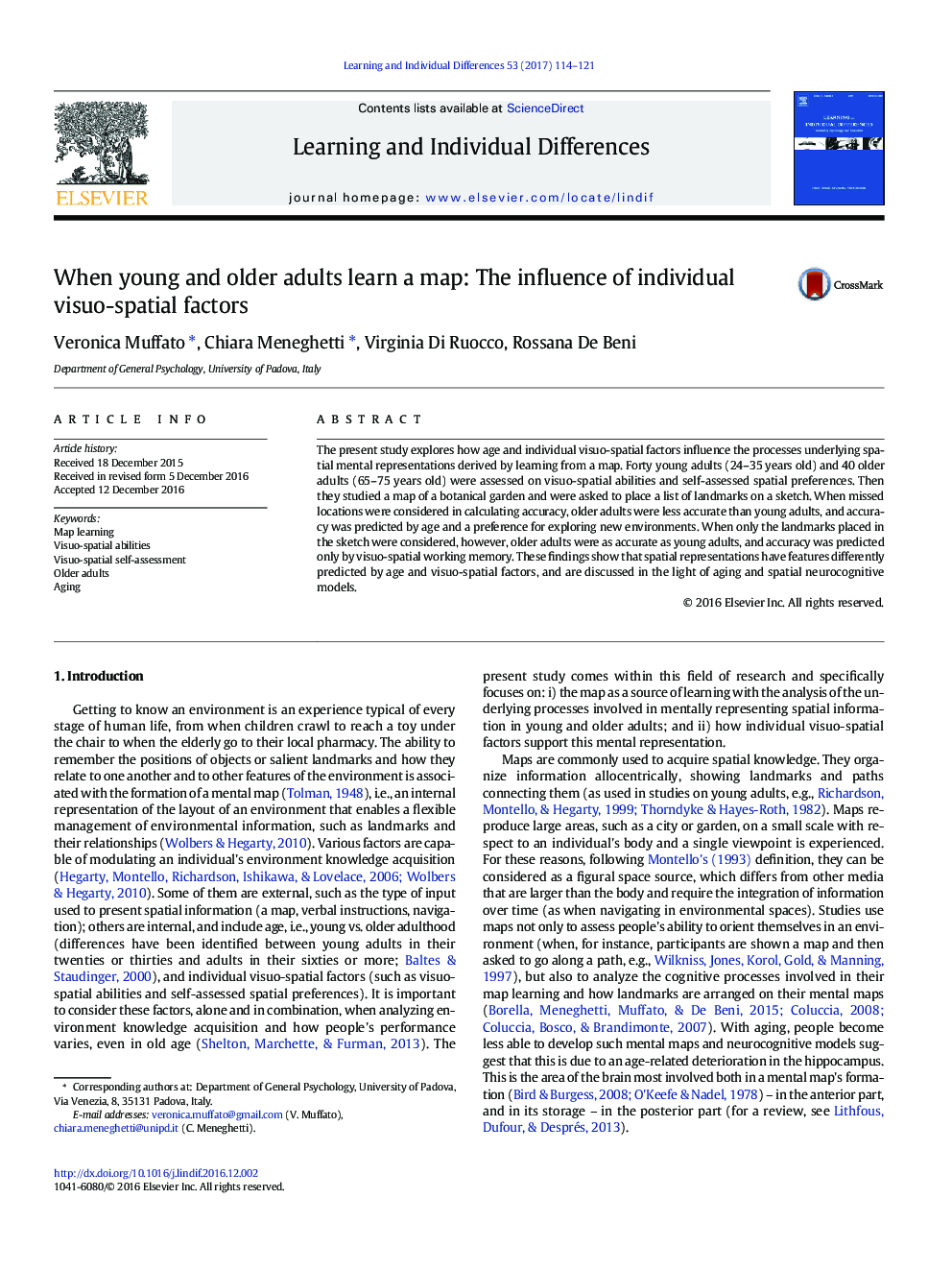| Article ID | Journal | Published Year | Pages | File Type |
|---|---|---|---|---|
| 4940185 | Learning and Individual Differences | 2017 | 8 Pages |
â¢Young and older adults learned a map and performed a sketch map task.â¢Older adults were less accurate than young adults, in terms of missed locations.â¢The groups were equally accurate in terms of the landmarks placed on the map.â¢Visuo-spatial factors differently influence accuracy in the measures considered.
The present study explores how age and individual visuo-spatial factors influence the processes underlying spatial mental representations derived by learning from a map. Forty young adults (24-35Â years old) and 40 older adults (65-75Â years old) were assessed on visuo-spatial abilities and self-assessed spatial preferences. Then they studied a map of a botanical garden and were asked to place a list of landmarks on a sketch. When missed locations were considered in calculating accuracy, older adults were less accurate than young adults, and accuracy was predicted by age and a preference for exploring new environments. When only the landmarks placed in the sketch were considered, however, older adults were as accurate as young adults, and accuracy was predicted only by visuo-spatial working memory. These findings show that spatial representations have features differently predicted by age and visuo-spatial factors, and are discussed in the light of aging and spatial neurocognitive models.
Graphical abstract.Download high-res image (237KB)Download full-size image
